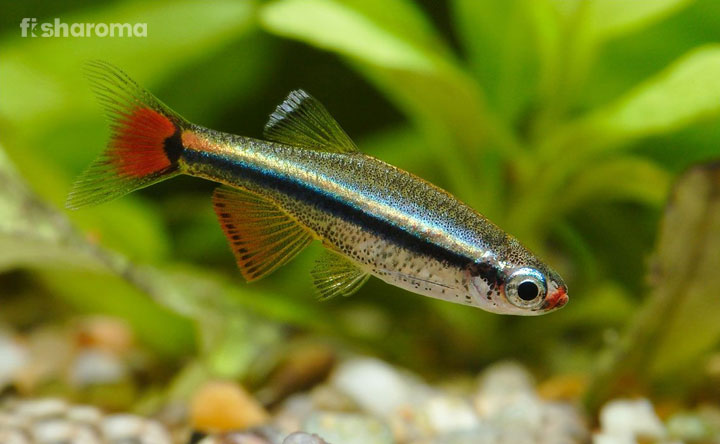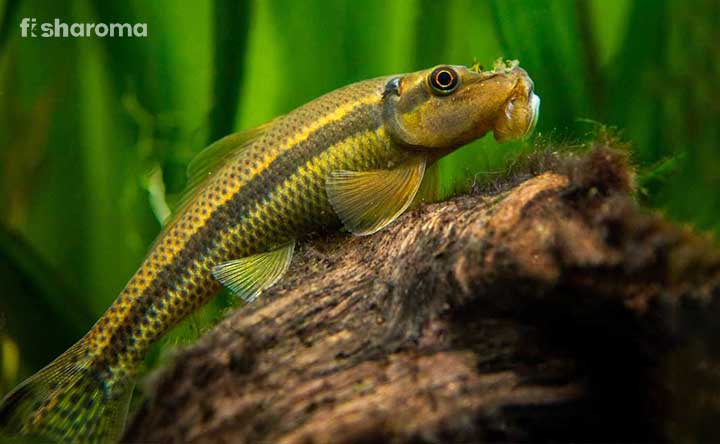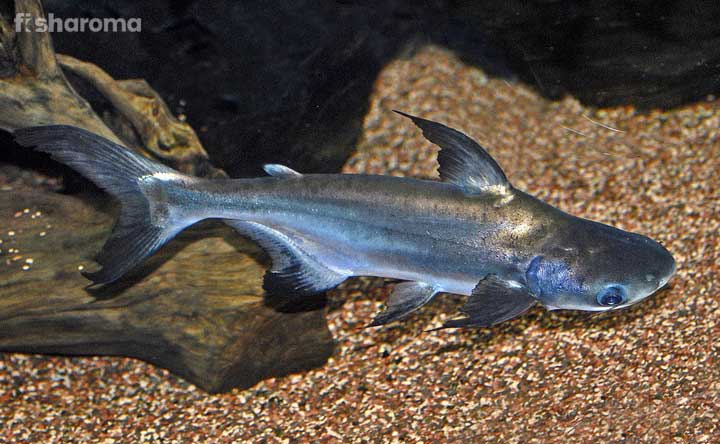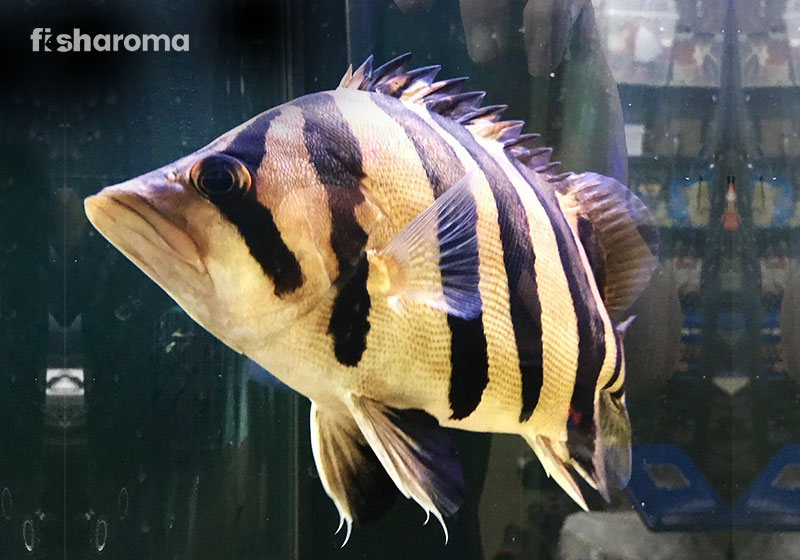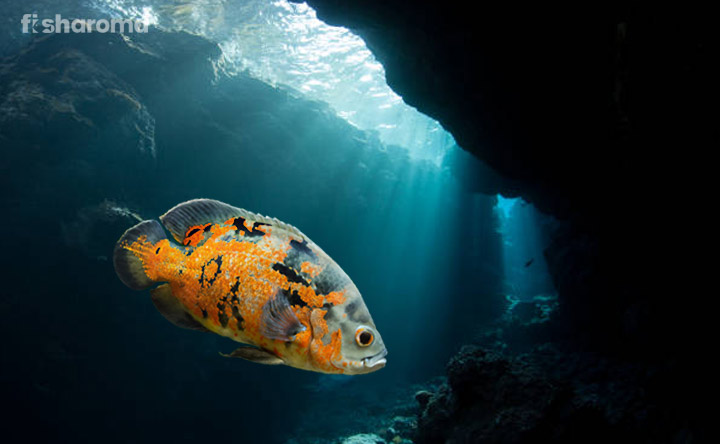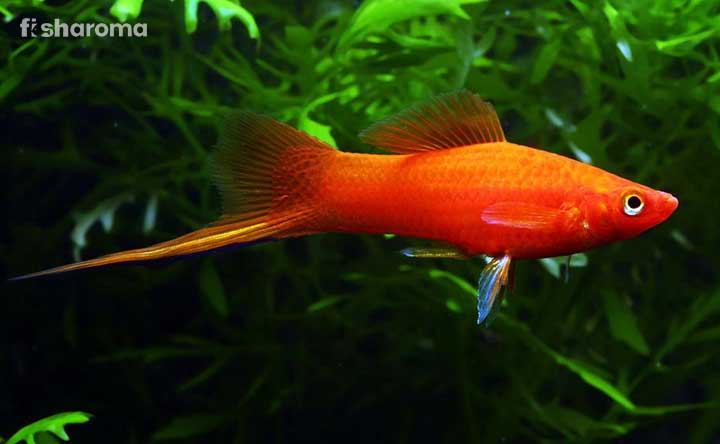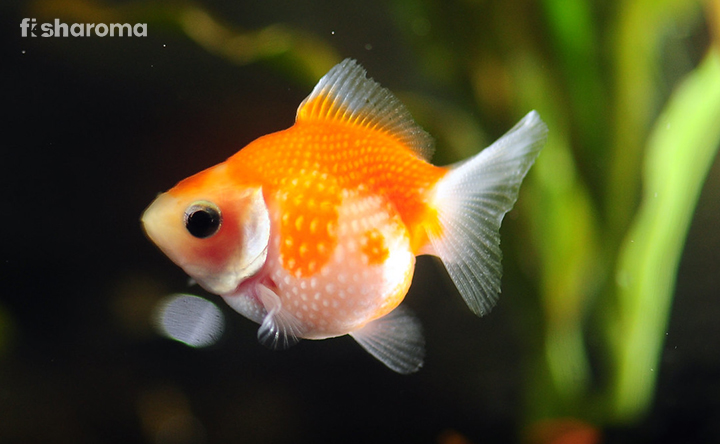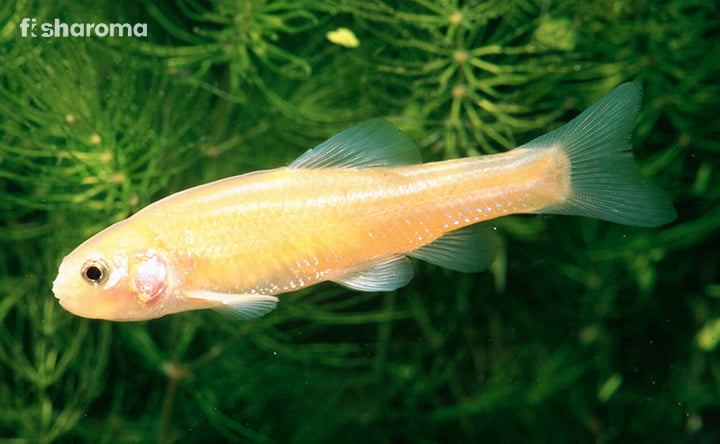Indian Glass Fish & Taking Care Of The Transparent Aquatic Pet
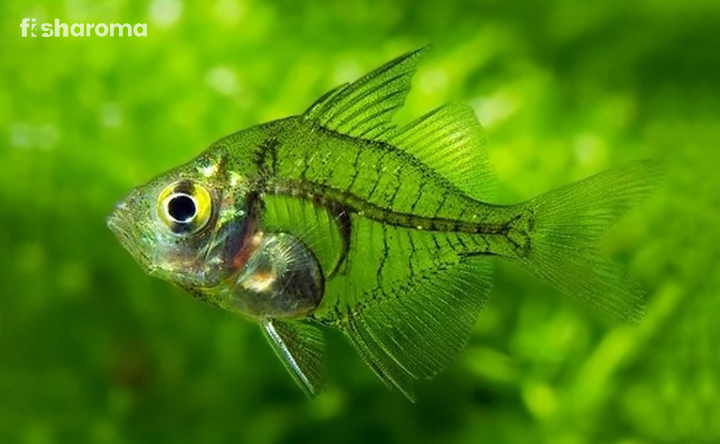
- Origin And Habitat Of Indian Glass Fishh
- Appearance Of Indian Glass Fish
- Behaviour Of Indian Glass Fish
- Lifespan Of Indian Glass Fish
- Diet Of Indian Glass Fish
- Tank Requirements For Indian Glass Fish
- Water Type For Indian Glass Fish
- Compatibility Of Indian Glass Fish
- Breeding Of Indian Glass Fish
- Diseases And Treatments Of Indian Glass Fish
- Summary
The small Indian Glass Fish (or Indian Glassfish) with the freshwater habitat looks amazing when it exhibits its transparent body. This is an Asian breed that is often found mostly in the Indian Subcontinent. There are many reasons why people choose them to keep as their pets, and by the time you complete reading the article, you will know the reasons. The fish is not only fascinating, but being able to witness such critters grow, and form a transparent body from scratch, gives you a different vibe altogether.
So, without further ado, let us dive into the deeper section of the care regime that is involved in nurturing the Indian Glass Fish.
Key Specifications Of Indian Glass Fish
| Other Names | Indian X-ray Fish, Indian Glassy Perch, Indian Glassy Fish, Malaysian Glassy Fish |
| Origin | Asia |
| Lifespan | Around 6 Years |
| Colours | Transparent |
| Temperament | Peaceful |
| Size | Around 3 Inches |
| Diet | Carnivorous |
| Reproduction | Oviparous |
| Maintenance Requirements | Easy |
| Tank Size | 15-30 gallons |
Overview
The transparent fish, when scientifically analyzed, belongs to the Parambassis family. Their binomial name is Parambassis ranga, and these fishes are native to Asian countries. The Indian Glassfish has a timid disposition, so they can be placed with some other fishes in a community tank. Their size is not that big, rather they are considered under the small fish groups who are usually content without many external conditions.
Their size and lifespan depend on their habitat, as wild ones are harder and bigger. However, you don’t have to arrange for a big tank, because these fishes are suitable for small yet spacious aquariums. This makes them a perfect option for many apartment dwellers, who have the desire to be aquarists but can’t be so, because of the space problem.
Origin And Habitat Of Indian Glass Fish
The Indian Glass Fish is native to South Asian countries. They are not introduced to any other continents so far. Currently, they are seen in abundance in countries like India, Bangladesh, Pakistan, Nepal, Cambodia, Thailand, and Myanmar.
As it has been established by now that these fishes are a product of freshwater regions, according to some breeders, some of these fishes prefer brackish water, but that fact is debatable. There are many habitats of them, covered with thick plantations, and such places are ideal for individual fishes who are scared or stressed. More generally, these fishes roam around slow-moving water bodies. That water can be even still, and they would easily swim through the water bodies in a small group, most of the time.
Appearance Of Indian Glass Fish
The entire body of the Indian Glassfish is transparent, and that is how they are born and meant to be. But, there are many breeders who infuse some fluorescent chemical through injection, to these fishes and they glow inside a tank. Most of the time, you can see the two strips of colour, on the upper side, and the underside of their body.
This is an unethical act though, because not all fish can withstand the process, and many die in the meantime. These fishes are called the Painted Glass Fish or Disco Fish and they are available amongst the breeders.
Size
The Indian Glass Fish in the wild habitat, grows slightly bigger than their captive-bred counterparts. The thing is that the wild ones can grow to be 3.1 inches, and the breeding specimens are around 3 inches, more or less the same.
Colour
They have a translucent body and you can see everything through them. The juvenile version of the fishes has more see-through bodies than the adult ones. During their breeding time, the male Glass Fish sports a yellow tint around their body, while their dorsal and anal fins turn dark black or blue.
Behaviour Of Indian Glass Fish
The Indian Glassfish is always a peaceful species and they become shy when they don’t get enough friends in their own group. When alone, they are stressed, and they tend to hide in their wild habitat. It is their insecurity that makes them hide, and like any other community fish, they feel scared when they are alone. However, their aggression is reserved for the breeding phase.
As far as their swimming zone is concerned, they are mostly found around the middle and upper layers. Especially during their feeding time, in-home tank set up.
Lifespan Of Indian Glass Fish
The fish can live for 3 to 6 years, if well taken care of in captivity. In the wild, they can live for a little more.
Diet Of Indian Glass Fish
The fish follows a carnivorous diet in the wild with mosquito larvae, smaller insects, maggots, and worms that they usually come across. While kept in tanks, breeders have different opinions because their feeding nature is different in some cases. While some breeders have successfully tried flake foods, many aquarists have seen their Glass Fish rejecting the flakes. This confusion is relevant for dry foods as well.
You can give Brine Shrimps, Tubifex, and Blood Worms, both in the live form and the frozen forms. Make sure the food that you are giving is not carrying any parasites or bacteria. Though it is difficult to determine, you can check the source from where you are getting them from.
Tank Requirements Of Indian Glass Fish
The fish is usually good for a community fish aquarium, where there are other fishes, swimming with them. What these fishes require in terms of water requirements is in the below sections.
Tank Size
While a single fish is good in a 15-gallon tank, you should arrange for a bigger one. This is because you shouldn’t keep only one. This will have a negative psychological impact on the fish. You should always keep at least 5-6 Indian Glass Fishes together and for that get a 30-gallon tank.
You should always give special focus in this aspect before choosing the appropriate fish tank size for the pet.
Tank Lid
The tank should have a proper lid, perfectly attached to the aquarium. This is a necessary feature for a tank that you are going to dedicate your fish to. This aims to prevent any dust particles from entering the tank and polluting the water eventually.
Substrate
The substrate, regardless of its material, should be dark in shade. That will help the camouflaging nature of the fish to show up. This is also because the transparent fish will look good against any dark backdrop. Either go for sand or gravel as those are the most suitable ones.
Filter
Canister Filter is a good option for filtering out pollutants. While filters often determine the flow of the water, make sure that yours only creates a slow-moving motion. This fish can’t cope up with the growing speed of the water. If your filter can’t work without creating high flow, then you can control the focal point of the filter.
Ornaments
The fish doesn’t need much decorations, just some rocks or driftwoods would be ideal. This is actually a non-demanding fish species, and it shows when it comes to its tank requirements.
Lighting
You could arrange for their soft lightings around the tank. Be it submerged or any other type, extremely harsh lights are not good for the fish, though they are conducive enough for spotting the fishes inside the aquarium.
Presence Of Flora
The fish loves plants, but more than their love, it is an essential setting for them, because whenever they are stressed they would like to hide behind them. While in the tank, there is nothing to be scared of, still it is best to use some rooted plants so that the fishes find it comforting for them and they stay stress free. You could try setting up Hornwort, Vallisneria, and Cabomba caroliniana. Since lights are not strong, you should opt for low-light plants for the freshwater tank which your fish would love.
Cleaning Method
Keeping the tank clean is not a rocket science, you can simply go for it if you know how to do it at home. The sand, gravel, and other decorative items should be properly cleaned. You should clean the tank glass with a dry towel once in a while. The water change should be a weekly affair when you partially replace 15%-20% of the aquarium water, without hurting the fish.
Water Type For Indian Glass Fish
The Indian Glass Fish, requires steady type of water with tropical conditions. Here are all the details that you need to know for Keeping Indian Glass Fish.
Temperature
The water should have the ideal range of temperatures starting from 20 Degrees Celsius and it can be as high as 30 Degrees Celsius. You can keep a heater if you think the surrounding temperature is cooler than the tank.
pH Level
The water in which the Indian Glassfish thrives is ideally on the borderline of acidic and alkaline. The value of the water pH range starts from 6 and goes up to 8.
Compatibility Of Indian Glass Fish
The schooling nature of the fish compels them to stay together in a group. They feel secure and content with their own kinds, and that is how they can actually exhibit their spontaneous nature. Other fishes sharing the same water parameters are also welcome to a Glassfish tank as long as they are suitable, and don’t obstruct each other in any possible way.
Suitable Tank Mates
The Indian Glass Fish allows itself to stay with other tank mates inside a tank. These fishes are docile and they are compatible with fishes of the same nature. Majorly, they are shy and would prefer to live with social fishes who swim in schools. As far as keeping them in their own group is concerned, make a school of 5-6 fishes together.
For a standard size aquarium, you can keep
- Guppies
- Loaches like Kuhli Loach
- Rainbow Fish
- Neon Tetra and other similar fishes
- White Cloud Mountain Minnow
- Mono Fish
- Platys
Unsuitable Tank Mates
The Indian Glass Fish is not suitable with aggressive species who can pick on them. This is because the hostile fishes can disturb the Glass Fish, and, as a result the latter species is always scared of such tank mates. The stress, nervousness, and tension amongst the fishes will have a negative impact on its health. So, avoiding any semi-aggressive fishes, as your Indian Glass Fish tank mates is the best thing.
Breeding Of Indian Glass Fish
Indian Glass Fishes are difficult to breed in their tank, especially the painted or dyed ones. In nature, the scenario is different and they mate naturally. The male and female fishes mate after they feel attracted to each other. The spawning condition includes warm water which generally happens when the water becomes soft during the rainy weather. In the wild, the monsoon is the weather when the fishes prepare themselves for the upcoming mating.
The female fish enters the marked territory of the male fishes prior to their mating. The spawning can last for several days, followed by a series of egg-laying processes by the females. The mating or spawning can happen both amidst a group or any mating pair can opt for this.
Such fishes lay around 200-500 eggs on leaves. If not separated, then they can consume their eggs immediately, although this fact depends on many things, because not all do the same. The fertilization process is initiated and done by the male fishes. The hatching phase takes just one day to be completed, and you can see tiny fishes coming out of the small egg shell.
None of the parents showcases any parental instinct, neither in the nurturing process of the “fry” nor in the feeding and protecting them post their hatching. The young fishes have a good growing pace and within a couple of months or maybe a month more, they will become adults. Their sexual dimorphism is visibly apparent by that time.
After coming out, the fry attached the body with any aquatic plants for survival. For prospective fish tank owners, this is important to understand that the young fishes are suckers for food. You have to keep it up with their growing appetite and provide the foods in small particles. This should happen throughout the day, in small quantities. Try Brine Shrimps, chopped into fine pieces and give them to your young Indian Glass Fish. This way you can ensure their nutrition, which propels their growth to a great extent.
Diseases Of Indian Glass Fish
The most common problems that Indian Glass Fish suffers from are fin rotting and skin ich. These are exclusive problems to the dyed or painted fishes. As we have discussed, these fishes have a low survival rate, especially during the colouring process. Those who get through the painful procedure often show up with such problems with scale or fins at the later point of their life.
There is one viral yet fatal problem that the fishes go through is Lymphocystis. You have to take care of the cleanliness of the tank and the fish, otherwise, the fish can succumb to such problems.
As a preventive measure, you should make the tank hygienic enough for multiple fishes. The filter, the food that you give, along with other parameters should be maintained all the time, without fail. The more proper the tank setting is, the better the chances of keeping the fish.
Summary
Indian Glassfish is exactly true to its name and that defines the beauty. The translucent body, with mellow temperament, offers a great combination to die for. Taking care is not that of a hassle, but the owner needs to be vigilant all the time. These fishes love being in their own school and don’t have any problem if they have other tank mates. This is applicable as long as their aquarium mates are peaceful like them.
They are not that aggressive in any way, and their mating is difficult in captivity. Though it is not impossible as breeders can make them breed. However, the point is that it should be natural and not forced in any way. The only thing, that a prospective owner should avoid, is the painted version of the fish. It is a genuine concern that many aquarists, mostly the inexperienced, are given the dyed Indian Glass Fish, which are injected with fluorescent dye. Be more careful and have a better understanding of their natural appearance before purchasing them, because no dyed or coloured fishes are natural.
Other Similar Care Guides
If the article is good enough for you to understand the entire species of Indian Glass Fish in a nutshell, then we would like you to have a look around our sites. It has similar more care guides like the following
- Rykuin Goldfish – This is a fancy goldfish version, with a captivating appearance. Their size is small, and their beautiful smooth swimming is a sight to behold.
- Pearl Gourami – Just like the Indian Glass Fish, Pearl Gourami is famous for its eye-catching look. The entire body of the fish has pearl-like dots and they have a couple of ventral fins.
- Snowball Pleco – The fish is a bottom dweller, like most of its Plecostomus cousins. The fish exhibits a series of snow-like white balls on a dark black body. This is why the fish has been named Snowball Pleco. This is a peaceful species and doesn’t really care for what other fishes in the same tank are doing.

